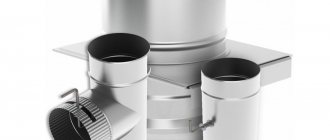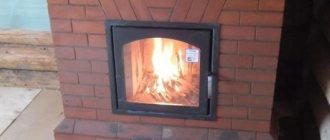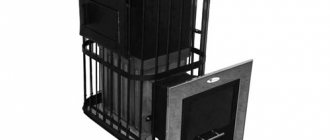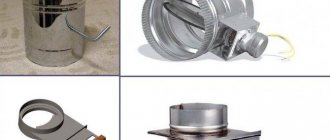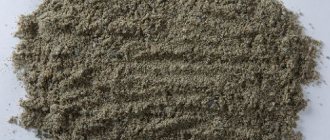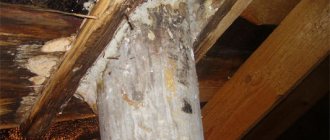What is it and what is it for?
Damper (from the German Schieber - damper) is a device for completely or partially blocking the movement of gases in the chimney. It has been used since the appearance of the first Russian stoves. Made from cast iron or steel. In modern engineering it has found application both in smoke exhaust structures and in ventilation systems.
Damper functions:
- Regulating draft and maintaining heat in the room.
The chimney is closed after use to prevent warm air from being drawn from the room into the chimney. Using a damper, you can reduce or increase the working cross-section of the chimney.
- Saving fuel consumption.
The valve can be used to regulate the intensity of oxygen flow to the flame, and accordingly increase or decrease the efficiency of the heater.
This statement is true only for furnaces and boilers without blowers and forced air supply devices.
Review of models from the Siberian Center for Stove and Fireplace Casting
A standard chimney damper can be made of cast iron or other metals. This is the simplest product that allows you to retain the necessary heat. In order for the chimney to be closed more tightly and reliably, it is possible to mount several elements at once (one on top of the other). The main thing is to prevent the formation of gaps between the plate and the frame. Otherwise, you will not only lose heat, but also be faced with the appearance of a circle of frost in the oven.
Views are frames that have not only holes, but also sides. The latter cover the outer cover, which closes the round hole from the inside. With the help of views, you can avoid installing several standard shutters. Since such products guarantee reliable double closure.
If you are looking for a damper for a fireplace stove that does not have a high enough chimney or only fires occasionally, you need a summer model. By using an open damper, you will significantly simplify kindling even in difficult climatic conditions.
A universal solution is extended dampers. They can simultaneously perform the functions of summer and standard analogues. The advantage of the solution is especially noticeable in the case of the construction of individual heating systems and with narrow chimneys.
Rotary valves are elements in which the chimney opening plate rotates rather than extends. To open/close the frame, you just need to turn its handle.
How the gate works
Structurally, the gate is a locking device with an adjustable valve. It is thanks to the displacement of the valve that the movement of gases in the chimney is regulated. Can be installed in chimneys of round, square and rectangular cross-section. It is a metal plate that moves inside the smoke channel in a certain way.
Gate valves can be of two types:
- Retractable. Moves in one plane back and forth.
- Rotary. Regulates air access by rotating around its axis.
In addition, valves can be manual or equipped with an electric drive. The cost of the latter is an order of magnitude higher and they are not used in chimneys.
Rotary throttle
rotary butterfly valve
Rotary valves are not as widespread as the previous version. The operation is based on a rod, which is located in the center. A metal sheet is installed on it with rotation around its own axis. Due to this, the space is regulated and blocked if necessary.
This is a simple design that can be made on your own without any problems. But the moving part of the mechanism cannot boast of high reliability. Periodic replacement is required, which involves additional costs.
gate diagram
For installation, the socket and flange method is used. The differences lie in the fastening elements, which become relevant in each case.
Types and designs
The chimney damper is available in several versions.
Retractable
It is a round or rectangular frame with a plate. The plate extends and retracts, thereby adjusting the cross-section of the chimney.
This option is most often used with brick and ceramic channels. To ensure incomplete sealing and avoid carbon monoxide poisoning, a small hole is made in the plate. The main advantage of this option is ease of installation.
Rotary throttle
A rotary or throttle valve (also known as a hog valve) is a plate made of steel or cast iron that rotates around an axis. The axis is a metal rod welded inside the chimney. Used in steel chimneys.
It is less reliable - over time, the welding fastening of the plate and axle weakens. You should avoid installing a rotary damper in the bathhouse - even when closed, this type of damper partially allows steam to pass through.
In addition, gate valves differ in material (the most common are stainless steel and cast iron) and the method of adjustment.
Differences between retractable and rotary gates
The retractable damper allows you to adjust the working cross-section of the chimney, while the rotary damper only allows you to open or close the pipe. Of course, some tricks are possible - such as securing the hog in an intermediate position in different ways, but the factory equipment does not provide for this. In addition, the rotary gate complicates mechanical cleaning of the pipe.
The hog is often installed in metal chimneys, and the retractable one is installed in brick chimneys.
Varieties
Control devices for ventilation are distinguished:
- according to form;
- by type of management;
- by installation method;
- according to the material.
The shape of the closing elements is round or rectangular (square). In each specific case, they are selected in such a way as to match the shape of the air duct.
Round channels have higher efficiency than rectangular ones. But it happens that the design features of the building do not allow air pipes to be installed everywhere due to lack of space.
It is necessary to use rectangular air ducts.
In modern ventilation systems you can find various options for control schemes for shut-off valves. The cheapest and easiest is to manually open and close the dampers.
But with this control method it is difficult to configure the system. That's why other designs exist.
The most common models are those with electric drive. In factories and public buildings, locking elements are often adjusted using hydraulic or pneumatic actuators.
Automation of the control function of control devices allows you to combine them into one circuit and control the valves from a single center.
In this way, it is possible to achieve the maximum possible synchronization in the operation of all dampers installed in the building.
When installing adjusting products, two types of connections are used: flange and socket. The socket connection is used for round air ducts, and the flange connection is used for rectangular ones.
Slide regulators are made from different materials. For example, for chimneys, movable plates are made of stainless steel, which is resistant to high temperatures and aggressive environments.
Products made of chrome or alloy steel are installed in channels with forced ventilation.
For natural ventilation schemes, galvanized models can be used. There are also plastic products.
Advantages and disadvantages
Like any engineering solution, a gate has a number of advantages and disadvantages.
Pros:
- Possibility of traction control;
- Fuel economy;
- Dampers help retain heat.
Minuses:
- The devices make it difficult to clean chimneys;
- If installed incorrectly, the gate may jam and negatively affect the movement of gases;
- To make the correct adjustment, you must have some knowledge in the field of smoke exhaust systems.
Make it yourself or order it
The choice between a homemade or a ready-made damper should be based on the type of chimney and the degree of its readiness. So, you can install a self-made retractable structure into a ceramic or brick channel.
If we are talking about a stainless chimney that is in the process of assembly, in this case it is better to choose a finished product. The damper is usually included in the chimney system and is mounted using pipe-to-pipe technology, which I will talk about later.
In addition, it is not always possible in the store to select a product specifically for your chimney shape.
Main functions of gate valve
Being the main draft regulator inside the chimney, the damper regulates the combustion of fuel. To reduce the draft and reduce the intensity of the flame in the firebox, it is enough to close the slide valve. To increase traction, on the contrary, it is necessary to open it.
In fact, a gate is an ordinary metal plate that allows you to regulate traction.
It can be installed both in single-wall and double-wall boiler systems.
If the fireplace and stove are not in use, then during this period the gate valve must be in the closed position.
As a rule, the valve is installed at the initial section of the chimney (on the first meter), since this particular section remains uninsulated.
But on the contrary, it is not recommended to install a valve on a section of a well-insulated chimney pipe. Especially when it comes to double-circuit pipes. When the metal of the inner and outer pipe expands, the gate valve may jam.
So, the main tasks of a gate valve are:
- Function of the draft regulator in the chimney.
- Partial blocking of the chimney channel section.
- Regulator of flame burning intensity in the firebox.
Making and installing a gate valve with your own hands
Required materials and tools
To independently manufacture and install any type of stainless steel gate, we will need the following tools:
- Bulgarian;
- Abrasive wheels - cutting and grinding;
- Drill;
- Tap and thread lubricant;
- Hammer;
- Pliers;
- Vise;
- Welding and electrodes;
- Kern;
- Roulette;
- Compass;
- Marker.
And materials:
- Stainless steel sheet (preferably domestic brand 12×18n10t, or imported AISI304, they are more expensive, but last an order of magnitude longer).
Sheet thickness 1.5-2.5mm;
- Stainless steel tube 6mm;
- Bolts 8mm -2 pcs;
- Metal rod for the frame.
Drawing and diagrams
Before manufacturing, it is necessary to draw a drawing or diagram of the future valve.
I will give some example diagrams below:
Size calculation
You need to take measurements very carefully; a gap of even a few millimeters can cause the chimney to malfunction.
Actions step by step:
- Using a tape measure, measure the dimensions of the internal section of the channel;
- Add 20-30 mm to the obtained result - you get the outer size of the frame;
- Do not forget to make an opening in the finished valve to release gas;
- The position of the welding holes should be accurately marked.
We summarize the dimensions for the rotary gate in the table:
Home manufacturing technology
Qualified specialists always emphasize that even a novice craftsman can make a rotary and retractable gate. After all, in order for the finished product to perfectly cope with its main task, you need to correctly take all the necessary measurements
If the finished damper fits tightly into the chimney, then over time it may jam, as it will be exposed to high temperature. And when there is a large gap between the valve and the pipe, it will be difficult to regulate the intensity of the draft during operation.
Multifunctional butterfly valve
To make this type of gate, you need to use a steel angle of 30x30 mm, as well as durable sheet steel, the thickness of which is at least 1.5 millimeters. The manufacturing process itself consists of several main stages, which must be implemented in strict sequence:
- Initially, you need to take measurements of the inside of the chimney. This is done in order to avoid mistakes during the manufacture of a frame from a corner, which is fixed with a welding machine.
- On one side of the frame, exactly in the center, you need to drill a small hole (7-8 mm in diameter). It will be useful for the rotary axis.
- A similar hole must be made on the other side of the frame.
- The plate for the damper must be cut from a steel sheet. This part must fully correspond to the internal dimensions of the manufactured frame.
- To make a guide axis, you need to take a piece of wire with a diameter of 9 mm and a length that will exceed the size of the frame itself by 7 cm. You need to cut a thread on one side of the wire (a die is best for this task).
- The finished axle is carefully threaded into the holes on the frame and secured with a nut.
- All cuts on the plate are processed with a grinding machine and inserted into the frame.
- At this stage, the master must weld the axle exactly in the center of the plate.
- All that remains is to make a comfortable handle for the guide from high-quality scrap materials.
Universal device
Modern gate valves include the valve itself, as well as a special guide frame. That is why, before starting work, the master must measure the internal cross-section of the pipe or brick chimney. In accordance with the available measurements, a neat rectangle is cut out of sheet steel (5 mm thick). A small longitudinal fold is made on one side, the width of which should not exceed 30 mm.
These manipulations are necessary so that the finished damper can be conveniently pulled out. Each cut must be polished, due to which the dimensions of the product are reduced by 2 mm on each side. Such actions by the technician will ensure free movement of the damper inside the chimney.
When the damper is made for a brick fireplace, the frame itself can be made of thick steel wire, the diameter of which is within 6 mm. During this procedure, the metal blank is simply bent into the shape of the letter P in strict accordance with the existing measurements.
If the chimney has a rectangular shape and is made of steel, then it is better to make the frame from a metal strip 2 mm thick and up to 35 mm wide. The prepared strip is bent lengthwise, leaving a neat gap along the thickness of the plate. Only after this can small cuts be made in two places at an angle of 45° to give the workpiece a U-shape. All gaps in the places of cuts must be butt welded.
To connect the ends of a homemade damper, you need to use two pieces of metal, which should be positioned in such a way that the damper blade can pass freely between them. At the end of all these manipulations, the master should come out with a rectangular frame with grooves for the shutter.
To make a valve in a round pipe, you need to take two identical metal sheets 2 mm thick. Round holes are cut in the center in accordance with the diameter of the chimney. The valve plate must be manufactured separately. After this, the sheets are connected to each other using a welding machine.
It is necessary to weld only three sides around the perimeter so that the holes of the finished valve on the pipe match exactly. A gap of 5 mm must be left between the top and bottom sheets. At this point, the damper manufacturing process can be considered complete, since the craftsman can only insert the valve and secure the finished product to the chimney.
Installation features
- When installing the gate at the stage of laying brickwork, the frame is placed at a height of 6-8 rows from the base of the pipe;
- The frame should stand straight, without blocking the outline of the chimney;
- In stainless steel chimneys, the valve is installed using the “pipe-to-pipe” technology. It is necessary to coordinate its dimensions with the diameter of the channel;
- An important nuance - the damper is installed on an uninsulated section of the chimney;
- The height from the firebox to the damper should not exceed 1 m (for metal channels);
- Pipe height from the floor to the valve - 1.8 - maximum 2 m (for brick);
- The damper in the grooves should move freely;
Frequent errors and problems during installation
- Installation of a valve in an insulated area. Under the influence of thermal expansion, the damper may jam;
- Installation of a cast iron part in a metal chimney (cast iron weighs a lot);
- Using too thin steel or stainless steel with a low nickel content for the manufacture of valves. Such a product quickly deforms under the influence of hot gases and can burn out;
- Installation of a gate with a non-smooth surface;
- Installation of a valve without a hole for carbon monoxide release;
- Installation of handles that do not allow monitoring the position of the valve (applies to rotary elements).
Features of gate maintenance
The gate, made of stainless steel, is usually polished to perfect smoothness. Soot settles on it poorly, but still settles. Therefore, it must be cleaned periodically.
The horizontal valve can be cleaned simply by pulling it out to the maximum and applying a special solution. Rotary - cleaned through the chimney with a special plastic brush. You should also ensure that the damper moves freely along the guides. It is allowed to periodically lubricate them with an anti-corrosion compound.
Expert advice
Where to install the damper on the chimney
There are 3 options for placing the damper relative to the chimney:
- Placement in the firebox of a fireplace or stove;
- Fastening according to the “pipe to pipe” principle;
- Installation in a ventilation pipe.
Let's consider the first 2 options:
- By placing the valve in the furnace firebox or in the outlet pipe
In this case, the damper is located at a height of no more than 1 m from the firebox, on an uninsulated section of the pipe. This location is convenient for adjusting the damper.
- Pipe in pipe
Applicable for metal chimneys. This installation option does not require additional fasteners. When purchasing a ready-made system, you should install the valve strictly according to the manufacturer’s instructions.
How to adjust traction
Adjusting the draft using a slider is quite simple. By changing the position towards increasing the gap, we increase the flow of air to the fire and the flame flares up stronger. Reduce the gap - traction decreases. The valve is closed after the flame has completely died out - this way the oven cools down much faster.
The latest boiler models are made with built-in automatic baffles. All other heating units require the mandatory installation of a damper.

